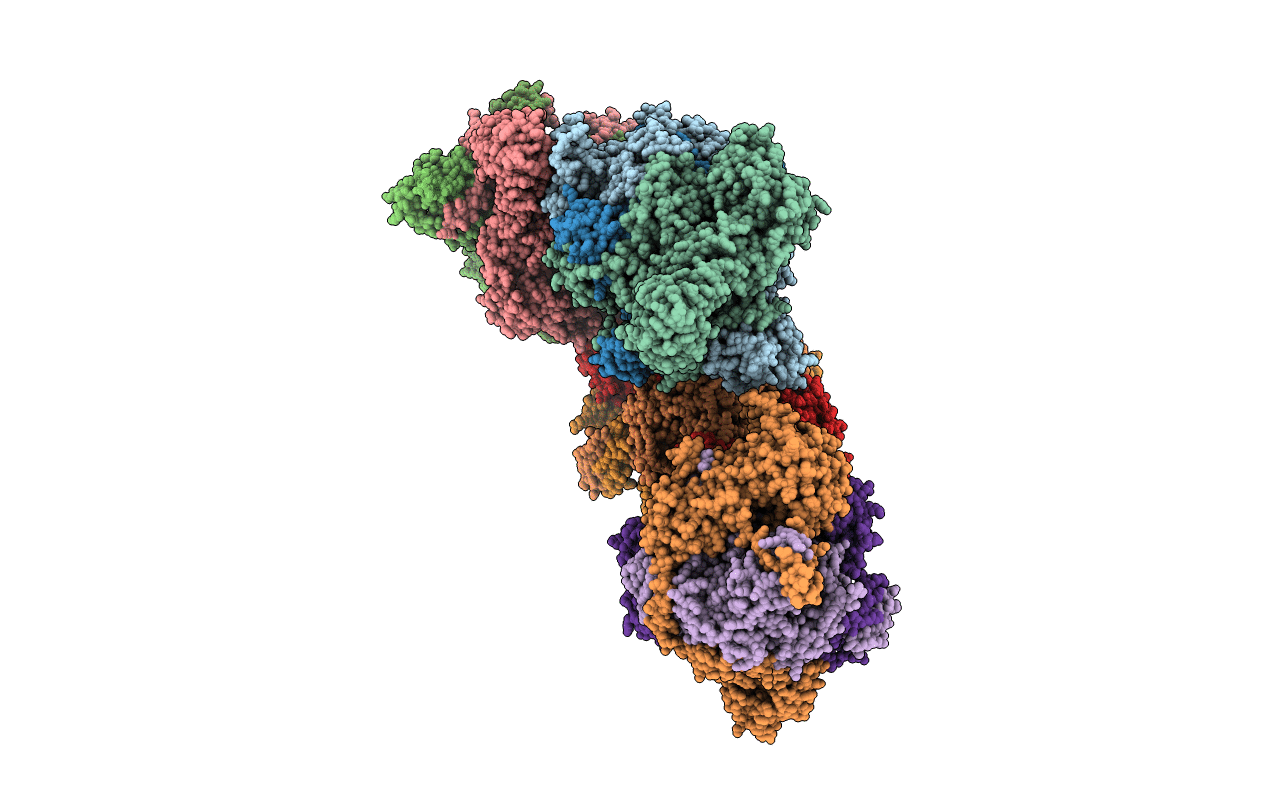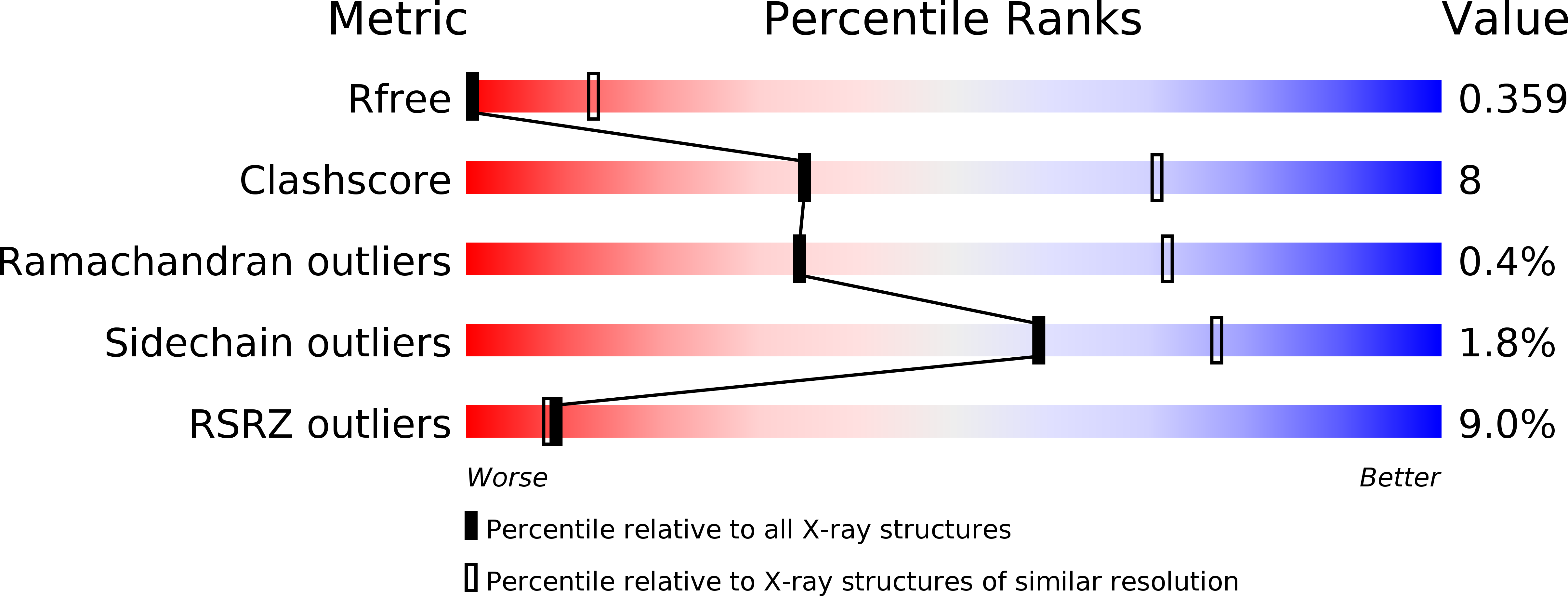
Deposition Date
2015-08-18
Release Date
2015-10-21
Last Version Date
2024-11-06
Entry Detail
PDB ID:
5D9A
Keywords:
Title:
Influenza C Virus RNA-dependent RNA Polymerase - Space group P212121
Biological Source:
Source Organism:
Host Organism:
Method Details:
Experimental Method:
Resolution:
4.30 Å
R-Value Free:
0.36
R-Value Work:
0.31
R-Value Observed:
0.31
Space Group:
P 21 21 21


